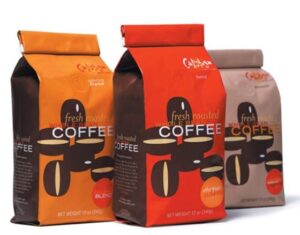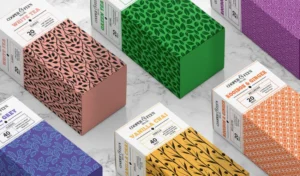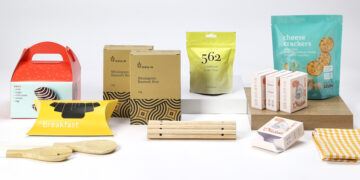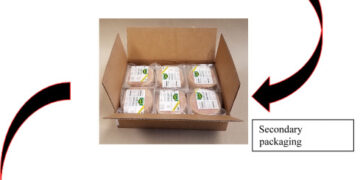Innovative Packaging Design Trends: Enhancing Product Appeal and Sustainability
Packaging design plays a crucial role in determining consumer buying decisions. Innovative packaging not only enhances the aesthetic appeal of the product but also conveys brand values, quality, and functionality. With an increasing demand for eco-friendly packaging solutions, the packaging industry is undergoing a transformation towards sustainable practices. In this article, we will explore the latest trends in packaging design that cater to both visual appeal and sustainability.
Minimalism and Simplicity
Minimalistic packaging design has gained immense popularity in recent years. It involves the use of simple and clean designs that emphasize the product and its features. Minimalistic packaging design reduces clutter and unnecessary information on the packaging, allowing the product to stand out. Such designs are visually appealing and provide a sophisticated look to the product. The use of minimalistic design also reduces the amount of material required for packaging, making it an eco-friendly option.

Sustainability
Sustainability is a key trend in packaging design that has gained immense popularity in recent years. Sustainable packaging solutions aim to reduce the carbon footprint and minimize waste. Companies are now focusing on creating packaging that is made from biodegradable, compostable, or recyclable materials. This not only reduces the environmental impact but also enhances the brand image. Brands are also adopting innovative packaging designs that incorporate sustainable materials such as bamboo, corn starch, and sugarcane.
Customization
Personalization is a growing trend in the packaging industry. Customized packaging designs help brands to create a unique identity and stand out in the market. Personalized packaging involves the use of unique designs, colors, and shapes that reflect the brand values and personality. Customized packaging also offers the opportunity to connect with customers on a personal level. Brands can add personalized messages, greetings, and promotional offers to the packaging to create a memorable experience for customers.
Interactive Packaging
Interactive packaging is a trend that is gaining popularity in the food and beverage industry. Interactive packaging designs involve the use of augmented reality, QR codes, and other technologies that offer a unique experience to customers.
Such designs engage customers and offer an interactive experience that goes beyond the product itself. Interactive packaging also provides an opportunity for brands to create immersive and memorable experiences that can enhance brand loyalty.
Bold and Vibrant Colors
Bold and vibrant colors are becoming increasingly popular in packaging design. Such designs are eye-catching and grab the attention of customers. Bold and vibrant colors convey a sense of energy and enthusiasm that reflects the brand’s personality. Such designs are particularly effective for products aimed at younger audiences or for products that are meant to stand out in a crowded market.

Functional Packaging
Functional packaging is a trend that focuses on the functionality of the packaging. It involves the use of innovative designs that enhance the user experience. Functional packaging designs are particularly effective for products that require special handling or have unique storage requirements. Such designs can include resealable pouches, easy-open lids, and portion-controlled packaging.
Furthermore, innovative packaging designs are not limited to a particular industry. In fact, it is applicable to almost all industries, such as food and beverages, beauty and personal care, household products, and pharmaceuticals.
For instance, the beauty and personal care industry can utilize eco-friendly packaging designs that are made from sustainable materials, such as bamboo or sugarcane. Similarly, the food and beverage industry can use interactive packaging to create a unique experience for customers, and functional packaging for products with unique storage requirements.
Moreover, the packaging industry is also experiencing a shift towards digitalization. Digitalization offers numerous benefits to the packaging industry, such as reducing waste, optimizing supply chain management, and improving customer engagement.
For instance, digital printing technologies can produce packaging designs with high resolution and quality, allowing brands to create highly customized and visually appealing designs. Furthermore, digital technologies can also reduce waste by optimizing the production process and reducing the amount of material required for packaging.
The packaging industry has a responsibility to address the environmental impact of packaging waste. The use of non-biodegradable materials such as plastic has become a global concern, leading to an increase in government regulations and consumer demand for sustainable packaging.
Packaging waste can contribute to ocean pollution, habitat destruction, and greenhouse gas emissions. Therefore, the packaging industry is under increasing pressure to adopt sustainable practices that minimize waste and promote environmental stewardship.
One of the solutions to reducing packaging waste is the use of biodegradable materials. Biodegradable materials are made from organic matter and can decompose naturally without causing harm to the environment. Such materials include plant-based polymers, such as PLA (polylactic acid) and PHA (polyhydroxyalkanoates), which are biodegradable and compostable. The use of biodegradable materials in packaging can significantly reduce the environmental impact of packaging waste and promote a circular economy.
Another solution is the use of recyclable materials. Recyclable materials, such as paper, cardboard, and glass, can be reused and repurposed, reducing waste and minimizing the environmental impact. Recycling also saves energy and resources required for the production of new materials. Brands can promote recycling by incorporating recycling symbols on their packaging and encouraging customers to recycle their packaging waste.
Furthermore, the use of sustainable packaging can also enhance the brand’s image and promote customer loyalty. Customers are increasingly becoming aware of the environmental impact of packaging waste and are choosing brands that adopt sustainable practices.
Brands that use eco-friendly packaging can differentiate themselves from their competitors and attract environmentally conscious customers. Sustainable packaging also provides an opportunity for brands to showcase their commitment to environmental stewardship and promote a positive brand image.
Conclusion
Innovative packaging design plays a crucial role in enhancing the visual appeal of products and conveying brand values. With the increasing demand for sustainable packaging solutions, the packaging industry is transforming towards eco-friendly practices.
Minimalism, sustainability, customization, interactive packaging, bold and vibrant colors, and functional packaging are some of the latest trends in packaging design that cater to both visual appeal and sustainability. Brands that adopt these trends can create a unique identity, stand out in the market, and offer an immersive experience to customers.
I















